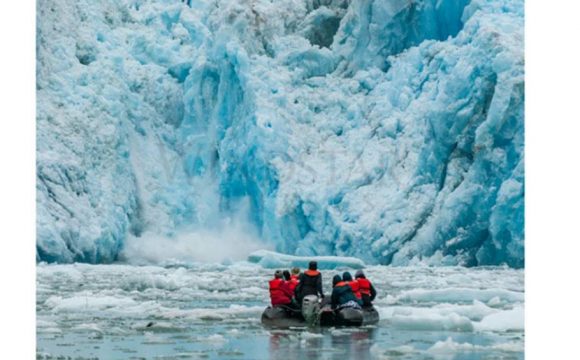Travel Japan’s low seasons, lesser-visited regions and alternative icons as well as its famous cities, sights and seasons for a year-round land of the rising sun experience. With southern subtropical islands to northern regions home to world-class skiing, here’s our guide to travelling Japan through all of its wondrous weather.
SPRING
Each spring Japan is lit-up with floral blooms across the country, the most famous being the Japanese cherry blossom (Sakura) lining towns, rivers and national parks. Though a famous sight to see in locations such as Kyoto and Osaka, another way to enjoy the blooms is in regional areas during their spring festivals. Takayama, a town in the mountainous Hida region of Gifu prefecture, is this year relaunching its Takayama Matsuri Festival (14 and 15 April). The Covid pandemic halted official Spring Festival activities but on their return, celebrations will showcase the town’s legacy of craftsmanship through centuries-old floats renowned for their extravagant carvings and karakury ningyo shows. Visitors can enjoy the evening on the 14th by following the floats blanketed with cherry blossoms and lanterns, as they parade around the historic core.
On the island of Shikoku, the ancient Matsuyama Castle is a must see sight to see during Spring. The Matsuyama Spring Festival is held annually from between March and April, with a Daimyo and community Parade kicking off the celebrations and light-up blossom trees along main routes. Visitors at the right time of Spring may also catch the Matsuyama Takigi Noh at the Shinonome Shrine – a theatrical art of mediaeval Japan and one of the oldest forms of Japanese theatre still practised today.
SUMMER
A country with unique geography, Japan experiences each season and offers an array of summertime activities beyond the beach. The Tohoku region of Japan is in the northeast of Honshu and whilst it experiences cold winters, it enjoys the summer months with highs in the late 20s. This year marks ten years since the re-establishment of the Michinoku Coastal Trail after the tsunami caused by the 2011 Tohoku earthquake. The trail takes visitors along the rugged coastline of several prefectures, for keen walkers, cyclists and swimmers to experience the coast and support the communities along the way. It is most idyllic during summertime, with forested trails, bays for swimming and charming trailhead cities for days of wandering. Another location is on Japan’s most southerly main island, Kyushu, where the National Park of Aso-Kuju showcases stunning landscapes and impressive mountainous terrain. The area is home to an extensive number of hiking trails and is particularly popular in early summer when azaleas are in full bloom and visitors can travel through the sweeping grasslands, marshes, dense forests, and hot spring towns.
Those looking for a coastal adventure during Japan’s summertime, take to the waters and adventure through countless coves in Ishikawa’s Tsukumo Bay. Home to clear blue waters and unspoiled nature, visitors can go boating, kayaking, snorkelling amongst the marine life, or simply stroll along the water’s edge.
AUTUMN
Autumn colours in Japan are beautiful and synonymous with some of the country’s top sights. Visit during the post-summer months for fewer crowds as well as incredible outdoor scenery. In northern Honshu’s Hachinohe, the road leading to the mystical Miroku Waterfall runs along a small stream, which, during the autumn months, is covered on both sides by trees brimming with autumn colours. The waterfall is a wide-branching, slow-falling waterfall, framed by stately trees shedding multicoloured leaves as the autumnal winds blow.
For a real off-the-beaten-track trip, travel to Tottori, Japan’s least populated but nature-rich prefecture with quaint hot springs, a stretch of rare Japanese sand dunes, and leaves of ‘seven colours’ during Autumn. Take on the world-class hiking and ancient pilgrimage routes around Mt.Daisen and Mt.Mitoku whilst the richly coloured golden leaves of the maple and beech forests decorate the temple trails.
WINTER
Japan’s northern island of Hokkaido, the northern region of Tohoku, and the central Japan Alps are famed for their winter landscapes, mountain resorts and ‘Japow’ snow for winter sports. To enjoy the winter weather, and culture, whilst firmly on two feet, tourists can wander the many ice and snow festivals Japan throws each year. When this year’s winter season rolls back around, the Sapporo Snow Festival will be back with huge ice sculptures, an international snow sculpture competition, snow experiences from slides to rafting, and local warming cuisine, typically each February. Another winter event not to miss is the Lake Shikotsu Ice Festival, typically held at the end of January with illuminated ice sculptures and often ice skating, fireworks and street food.
For keen explorers and outdoor enthusiasts, snowshoeing in ski locations is another way to explore picturesque landscapes. Norikura Highlands in Nagano prefecture; the Japanese Alps, offers the perfect conditions for winter snowshoeing for every level of contender. The Highlands run alongside the Three-star Road, where visitors can also enjoy the spectacular view of Zengorou waterfall, frozen in a halted image in the winter.
For more information on Japan visit: japan.travel/en/uk/
















